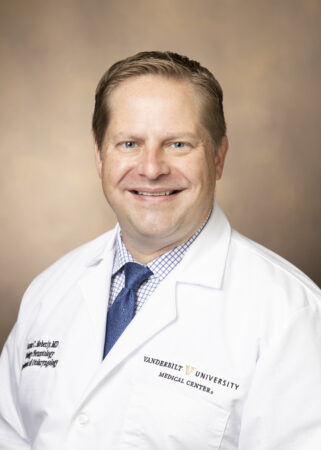Though middle ear effusions and acute otitis media are the most commonly treated childhood ear diseases, costing more than $3.2 billion annually, diagnosis methods are subjective.

The current standard of care to evaluate the eardrum is a handheld otoscope that has a small field of view and relatively poor lighting. As a result, ear exam findings can be very subtle, making accurate diagnosis challenging even for experienced primary care, emergency medicine, and ear, nose and throat (ENT) physicians.
“The lack of an objective method to evaluate the eardrum is a critical barrier to accurate diagnosis and appropriate management of ear diseases,” said Aaron Moberly, MD, associate professor of Otolaryngology-Head and Neck Surgery. “Devices are needed to assist in a more accurate, consistent and objective diagnosis of ear pathology.”
A new project, funded by the National Institutes of Health (NIH), National Institute on Deafness and Other Communication Disorders (NIDCD) and led by Moberly and Metin Gurcan, PhD, professor and director of the Center for Biomedical Informatics and the Clinical Image Analysis Lab at Wake Forest University School of Medicine, aims to develop machine learning applications to analyze eardrum videos collected with a digital otoscope. These will be combined with tympanometry, demographic and clinical data to achieve diagnostic objectivity. The long-term goal is to improve clinicians’ diagnostic accuracy for ear diseases, using novel computer-assisted approaches.
“This project is highly innovative, both in terms of its clinical impact to shift the field toward a more objective approach to ear diagnosis, as well as the scientific innovations of applying machine learning techniques to ear disease,” Gurcan said.
This five-year project builds on NIH (NIDCD)-funded work by Moberly, Gurcan; clinical co-investigators Charles Elmaraghy, MD, Maya Iyer, MD, and Rachael Levine, MD at Nationwide Children’s Hospital in Columbus, Ohio; and biostatistics and data science co-investigators, Carl Langefeld, PhD, and Khalid Niazi, PhD, at Wake Forest University School of Medicine.
“Our previous work laid the foundation to develop machine-learning approaches to provide an objective approach to ear diagnosis using digital otoscopy computer-assisted image analysis,” Moberly said. “This project will dramatically expand on our previous work with the overarching goal of developing new machine learning applications to differentiate multiple ear abnormalities, develop an otoscopy clinical decision support system, and determine how the otoscopy clinical decision support system improves clinicians’ diagnostic performance.”
By providing an objective approach to ear disease diagnosis, the project seeks to reduce over-diagnosis and over-treatment of ear disease, which should ultimately lead to a reduction in healthcare costs and adverse events.
Patients will be enrolled at both Vanderbilt University Medical Center and Nationwide Children’s Hospital in Columbus, Ohio. VUMC patients interested in participating can call the Ear, Nose and Throat Clinic at 615-322-6180.












